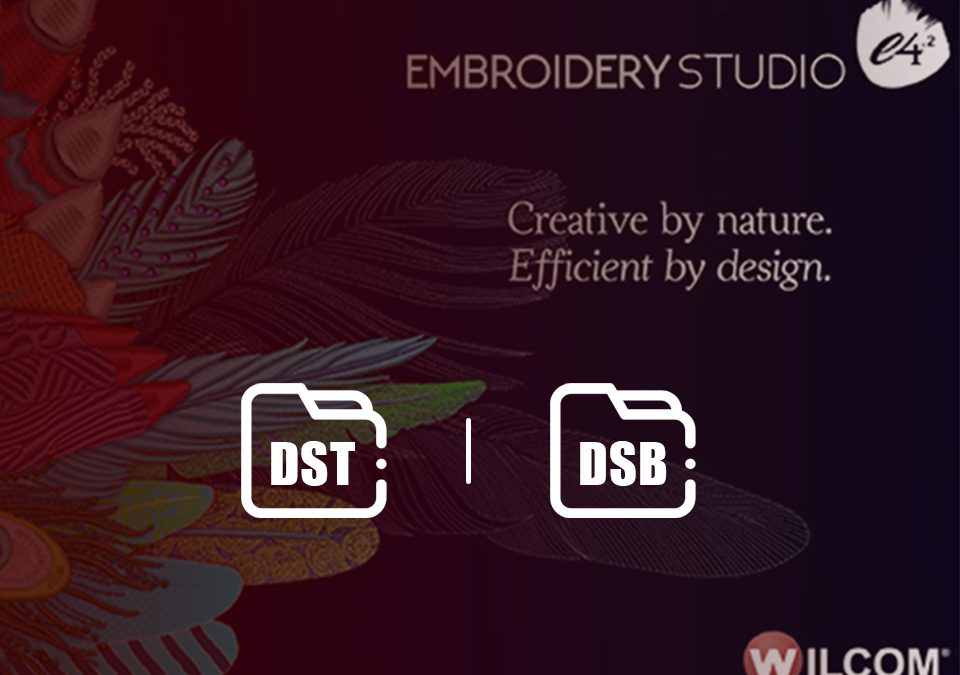
How to choose embroidery bobbins with BAi?
2022-05-22
How to choose embroidery thread with BAi?
2022-05-23Some useful suggestions when digitizing embroidery patterns

Many of our customers often encounter this situation: when they just start their embroidery business and are still unfamiliar with the digitizing, they can handle the simple designs with no big problem, but when it comes to a complicated one, it can be a real headache.
It is true that the digitizing takes lots of work, and there are many details we need to pay attention to, otherwise, we may have problem during the embroidery. Therefore, it is necessary to take a good lesson first on the digitizing skills.
In this blog, we’ll share with you some practical tips about digitizing.
This blog contains the following topics:
- Application of common stitches
- Application of common bottoming methods
- Practical application skills
Let’s learn some basic knowledge about common stitches firstly.
Application of common stitches
Flat wrapping stitch
It is suitable for embroidery and compound filling of ribbon patterns. Since the stitches are dense, the actual embroidery effect is shiny, and it is the most common stitch method.
Tatami stitch
Tatami is named for its stitch-like knitting effect, which is mainly formed by the undulating stitches produced by its staggered needles. Tatami stitch is often used to fill stitches.
Zigzag stitch
A zigzag stitch is a staggered stitch that is difficult to distinguish from a flat wrapping stitch when the spacing is small. The needle drop points on both sides of the flat wrapping stitch are symmetrical, and the zigzag stitch are staggered. The default spacing of zigzag stitch is larger normally.
E-shaped stitch
A stitch method in which two stitches overlap back and forth. It is named for its stitch shape. E-shaped stitch can be used for fixing stitch of patch embroidery.
Application of common bottoming
Common bottoming methods with flat wrapping stitch
1. Centerline flat and sideline flat (in most cases)
2. Zigzag/Double zigzag (suitable for flat wrapping stitches that require fullness)
3. Tatami (suitable for a wide range of filling stitch)
Common bottoming methods with Tatami stitch
1. Sideline flat stitch (suitable for small size Tatami bottoming)
2. Tatami (suitable for a wide range of Tatami bottoming)
Practical application skills
Short stitch
It’s often used to optimize flat wrapping stitches where the number of corners is too large. When this effect is selected, the software will automatically decrease the number of stitches in the middle of the corner, so that there won’t be too many stitches in the corner, and the outer thread will not be squeezed to the side by the inner one, which avoids the pattern to be out of shape.
Smart Corners
It’s often used to optimize corners for flat wrapping stitches . When this effect is selected, the software will automatically change the routing mode of the corner to achieve a better embroidery effect.
Zigzag sideline
It’s usually applied with flat wrapping stitches, or tatami. Zigzag sidelines can be applied to most stitching methods, such as flat wrapping stitches and tatami stitches. With this function, you can achieve the effect of stitching with uneven edges. There are two kinds of zigzag edges: random zigzag and set zigzag. The stitch length change of random Zigzag is irregular, but the variation range can be set, and the change of the set Zigzag is the periodic repetition of the set number of stitches.It is usually used to design animals, plants and special pattern effects with more hair. It can make embroidery feel more natural and real. In addition, it can also be used as a overlay for flat wrapping stitches to create a “waterfall” effect.
Shrinkage Compensation
Shrinkage compensation is used to compensate for the shrinkage and deformation of the pattern caused by the shrinkage of the fabric. Different fabrics apply different shrinkage compensation. For fabrics with high embroidery elasticity, such as cotton, knitted fabrics, etc., the shrinkage compensation coefficient needs to be increased. For fabrics with less elasticity, such as canvas, leather, non-woven fabrics, etc., the shrinkage compensation coefficient needs to be lowered.
Automatic jump stitches
When the automatic skip stitch function is enabled, when the length of a single stitch exceeds a certain value (usually 7mm), the software will automatically divide the stitch into multiple stitches with 7mm as the maximum stitch. The maximum value is typically 12.7mm.
Simulation running function
This function allows the software to simulate the actual running stitch to simulate the running track of the pattern. This function can be used when you want to preview the embroidery situation of the machine.
Insert an offset object
Offset the original object at certain intervals to generate a new object. Unlike replication, the size of each object can be different. Set parameters: object type, offset, number of times, offset direction, a new single or multiple objects will be generated.
User-defined dividing lines to divide objects
The user-defined dividing line is used to divide the object, which is to use the “user-defined dividing line” to divide one or more object and slice it to achieve the appropriate shape. First, at the object to be divided, add a dividing line, select this dividing line, and make a “user-defined dividing line” to select the object to be divided. Choose Edit, User Defined Split Line to split the object. After the system completes the segmentation of objects, select unnecessary objects, and press DEL to delete unnecessary objects. Then complete object segmentation.
Repeat splits
A special tatami stitch method that repeats the dividing line in a matrix of rows and columns according to the set dividing line. The actual embroidery effect can reflect the direction of the dividing line and realize the special effect like relief.
Pattern: Select the split pattern, the X/Y dimension defaults to the original size of the pattern, and the pattern can be scaled after modification.
Row/Column Spacing: The spacing of the row-column matrix arrangement pattern defaults to the original size of the pattern.
Row/Column Offset: The offset when arranging patterns in rows and columns can get a staggered effect.
Stitch value: The parameter for tatami filling is the same as the basic parameter of tatami.
Sequence of embroidery
When the embroidery pattern has multiple edges, or after embroidering a word or sentence, add a band stitch of flat wrapping needle around the letter or word to wrap the edge. When the number of stitches is small (below 10000 stitches) or the number of characters is small, the embroidery sequence has little effect. When the number of stitches is large or the number of characters is large, due to the shrinkage of the material, the sequence of embroidery will affect the final embroidery effect (dislocation of flat stitches for hemming). Some embroidery sequence changes need to be made to improve embroidery effect.
Adjustment skill 1: (for large patterns with a high number of stitches) The pattern can be divided into several sections. When the main part of a section is finished, directly start wrapping the edge of the pattern with a flat wrapping needle. And then start the embroidery of the main part of the next section.
Adjustment skill 2: (for words or sentences with a large number of words) after embroidering a letter or word, directly wrap the edge with a flat wrapping needle, and then start embroidering the next letter or word, and so on. Instead of waiting for all the letters or words to be embroidered, then use a flat wrapping needle to unify the edges.
Making two layers of bottom
When embroidering on elastic fabrics such as socks or knitted fabrics, in addition to increasing the coefficient of shrinkage compensation, you can also improve the embroidery effect by making two layers of bottom.
Increase the stitch density
When the embroidery is more precise, the stitch density can be appropriately increased. When the embroidery is relatively small, you can also increase the stitch density appropriately, and then change the needle with a smaller diameter and a thinner thread on the machine to increase the precision of the embroidery.
Well, that's all for today's blog. You can also check related information on our YouTube Channel: BAI Embroidery Machine
-1.png)

